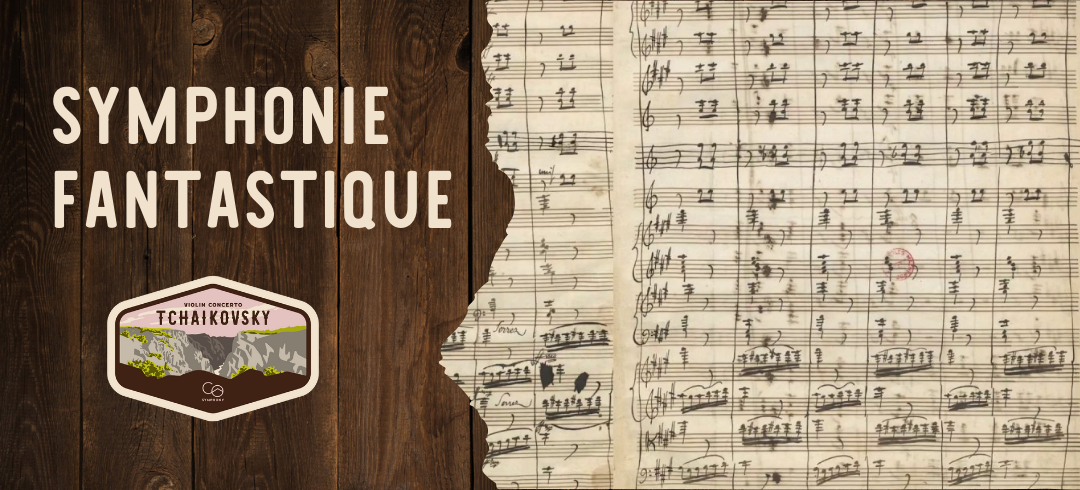It begins with obsession.
Paris, 1827. A young, fire-eyed composer named Hector Berlioz sat in a darkened theater, watching Shakespeare’s Hamlet. But it wasn’t the melancholy prince that seized his soul, it was Ophelia, played by a striking Irish actress named Harriet Smithson.
For Berlioz, it was not love at first sight. It was madness.
He became consumed. He wrote her letters – torrents of them. She never replied. And the silence drove him deeper into a fever-dream from which only music could rescue him. Or perhaps, damn him.
From this firestorm of passion and torment, Berlioz birthed the Symphonie fantastique, a piece so revolutionary, it cracked open the Romantic era like thunder over the Alps.
But this wasn’t just a symphony. It was a confessional, a musical hallucination. Few works of art have so successfully and vividly captured feelings so fevered that they seem to embody the paradigm of the American beat poets of the 1950s: life lived at a pitch that was next to madness. And like many of the beat poets, Berlioz was more than likely under the influence of his drug of choice – opium – when he composed much of the Symphonie fantastique. Leonard Bernstein put it bluntly and brilliantly when he observed, “Berlioz tells it like it is. You take a [drug] trip, you wind up screaming at your own funeral.”
Each movement peeled back another layer of the artist’s unraveling psyche, painting scenes not on canvas but in sound: vivid, feverish, and terrifyingly alive.

Movement I: “Dreams – Passions”
The symphony opens with a portrait of Berlioz himself: a young artist consumed by longing. A sweet, yearning melody – the idée fixe – represents Harriet, his impossible muse. Every time it returns, it’s her. In his mind, she’s everywhere, inescapable. He tries to forget. He cannot.
Movement II: “A Ball”
The artist is at a glittering soirée, dancing amid candlelight and waltzing silhouettes. But even here, amid the swirling elegance, she appears again. Her melody flickers through the music like a ghost in silk. He is trapped in a waltz with memory.
Movement III: “Scene in the Fields”
Seeking peace, he wanders the countryside. Shepherds call gently across the hills. Nature seems to soothe him. But as dusk falls, the solitude twists. Dread seeps in. Distant thunder rumbles. The melody returns, haunting and uncertain. She is still with him. Always.
Movement IV: “March to the Scaffold”
In a vision of despair, the artist dreams he has murdered his beloved. He is led to the guillotine. A brutal, relentless march drives the music forward. At the moment the blade falls – silence – then a wicked flourish. Her melody appears for just a heartbeat, like a final mocking whisper before darkness.
Movement V: “Dream of a Witches’ Sabbath”
This is no ordinary finale. It is a hallucination of hell.
The artist sees himself at his own funeral, surrounded by witches, ghouls, and grotesque laughter. Harriet’s melody returns, but now it is twisted, vulgar, and grotesque. The once-sacred love has become a demonic chant. The Dies Irae – the ancient chant of the dead – tolls through the orchestra like a cathedral collapsing in flames.
It is chaos. It is horror. It is brilliant.

Years later, Berlioz, improbably, would marry Harriet Smithson. Briefly. It ended in heartbreak. Life, as ever, echoed his music.
But Symphonie fantastique lived on – not just as a work of art, but as a glimpse into a composer’s fevered soul. It is considered to be the first true programmatic symphony – music that not only depicts a scene or story but also follows a more comprehensive narrative throughout the movements – and no one had heard anything like it before.
It shattered conventions, redefined orchestration, and inspired generations of musicians.
More than a love story, it is a portrait of madness, creativity, and unrelenting passion. It remains one of the most dazzling, disturbing, and unforgettable journeys in classical music nearly 200 years after it was composed.
Hear Symphonie fantastique performed Live
Don’t miss your chance to experience this epic conclusion to the Colorado Symphony’s 2024/25 Season from May 30-June 1 at Boettcher Concert Hall led by Music Director Designate Peter Oundjian.


